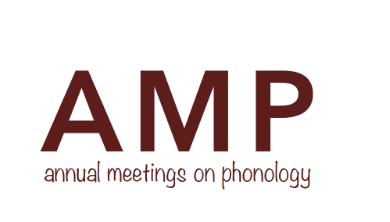A Dynamic Neural Model of Tonal Downstep
Abstract
Downstep has been defined as a contrastive drop in pitch from a preceding tone, or a drop in pitch that cannot be explained by pitch declination. We arrive at a neural-process account of downstep in Bimoba HLH sequences by considering the general neural mechanisms that may underlie action selection and control. Incorporating insights from phonological and phonetic accounts, we rely on the presence of low register and derive continuous changes in pitch over time. Tone and register are inputs into a dynamic neural field (DNF), defined as activation distributions over pitch values. The DNF is coupled to an articulatory dynamics, which drives pitch towards targets (stabilized peaks in the DNF) over time. Downstep derives from inhibitory input to the DNF once a target is achieved, a mechanism independently necessary to facilitate rapid transition between sequential targets. The presence of the low register during the L tone and the cycle of activation and inhibition leads to a downstepped realization for the second H, capturing facts reported for tonal downstep in Bimoba. We thus see downstep as a natural consequence of the parameterization of neural dynamics that facilitates rapid transitions between action goals on the same metric dimension (here, pitch).
How to Cite:
Chaturvedi, M. & Shaw, J. A., (2025) “A Dynamic Neural Model of Tonal Downstep”, Proceedings of the Annual Meetings on Phonology 1(1). doi: https://doi.org/10.7275/amphonology.3021
Downloads:
Download PDF
437 Views
256 Downloads
